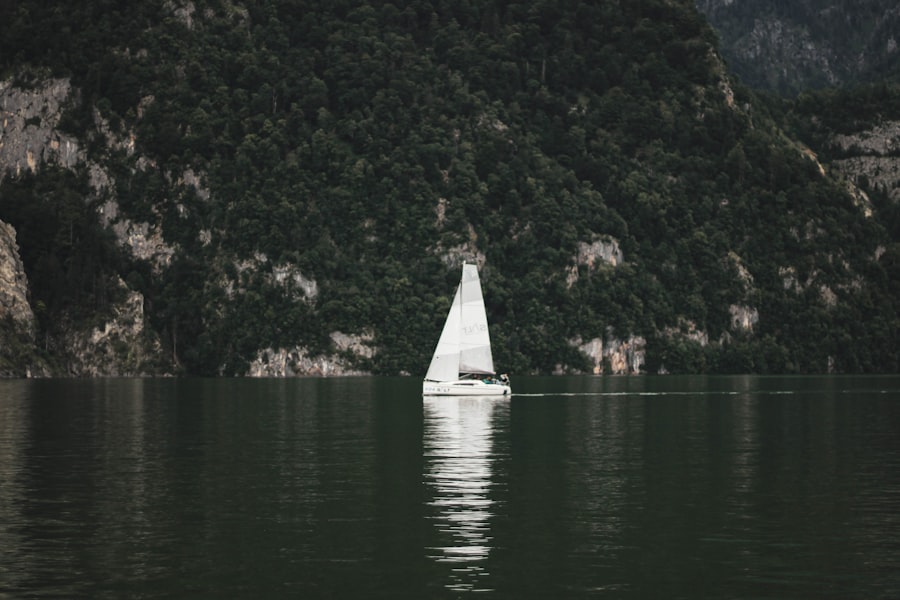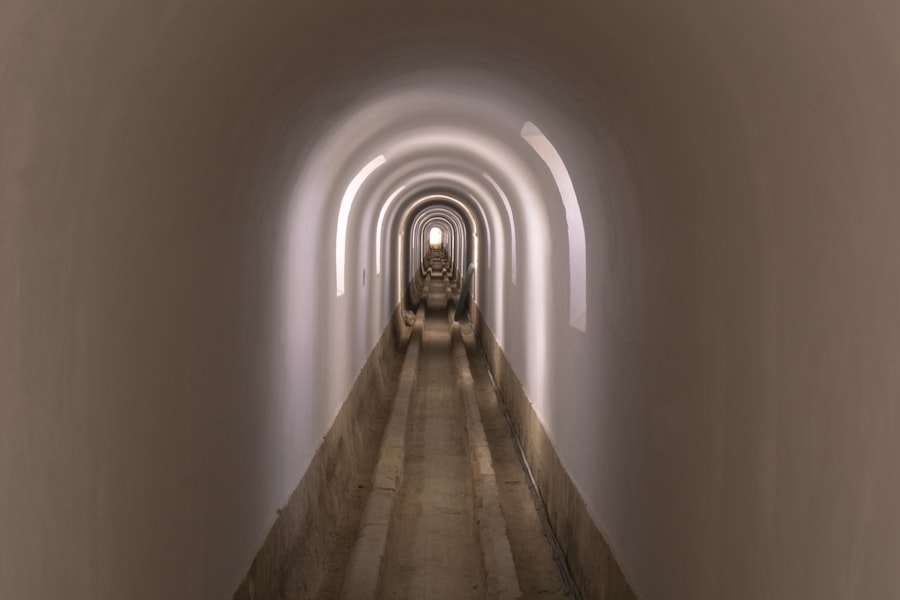The Drake Passage, a body of water situated between the southern tip of South America and Antarctica, is renowned for its tumultuous seas and unpredictable weather. Spanning approximately 800 kilometers (500 miles) in width, it serves as a critical maritime corridor for vessels traveling to and from the Antarctic region. Named after the English explorer Sir Francis Drake, who navigated these waters in the late 16th century, the passage is often characterized by its fierce currents and the confluence of the Atlantic and Pacific Oceans.
This unique geographical feature not only plays a pivotal role in global oceanic circulation but also presents a formidable challenge for mariners. The passage is often described as one of the most treacherous waterways in the world, with its reputation stemming from the combination of strong winds, high waves, and rapidly changing weather conditions. The convergence of cold Antarctic waters with warmer currents creates a dynamic environment that can shift from calm to chaotic in a matter of hours.
For those who venture into these waters, understanding the Drake Passage is essential, as it requires not only navigational skill but also a deep respect for nature’s power. The passage is not merely a route; it is a testament to the raw beauty and unpredictability of the ocean.
Key Takeaways
- The Drake Passage is a narrow stretch of water between South America’s Cape Horn and the South Shetland Islands of Antarctica, known for its unpredictable and rough sea conditions.
- Weather in the Drake Passage can change rapidly, with strong winds, high waves, and extreme cold temperatures, making it one of the most challenging maritime routes in the world.
- Navigating the Drake Passage requires careful planning and consideration of factors such as icebergs, strong currents, and limited visibility due to fog and snow.
- The Drake Passage holds historical significance as the route taken by famous explorers such as Sir Francis Drake and Ernest Shackleton during their expeditions to Antarctica.
- Strategies for a smooth passage through the Drake Passage include choosing the right time of year, using stabilizing technology on ships, and following a well-planned route to minimize the impact of rough sea conditions.
Weather and Sea Conditions
Weather conditions in the Drake Passage are notoriously volatile, making it a focal point for meteorologists and sailors alike. The region experiences frequent storms, with winds that can reach speeds of over 60 knots. These gales can whip up waves that tower as high as 15 meters (50 feet), creating a daunting environment for even the most seasoned sailors.
The interplay between the cold Antarctic air and the warmer air masses from the north contributes to this instability, resulting in sudden shifts that can catch mariners off guard. In addition to wind and wave height, temperature fluctuations also play a significant role in the overall conditions of the Drake Passage. The waters can be frigid, often hovering around freezing point, which poses additional risks for vessels.
Icebergs and sea ice are common sights, particularly during certain times of the year, further complicating navigation. Mariners must remain vigilant and adaptable, as the weather can change rapidly from sunny skies to stormy seas within hours. Understanding these conditions is crucial for anyone planning to traverse this challenging maritime route.
Navigational Challenges

Navigating the Drake Passage presents a myriad of challenges that require both skill and experience. The unpredictable nature of the weather can lead to sudden changes in visibility, making it difficult for sailors to maintain their bearings. Fog, rain, and snow can obscure landmarks and navigational aids, necessitating reliance on advanced technology and instruments.
Additionally, the strong currents that flow through the passage can significantly affect a vessel’s course, requiring constant adjustments to maintain a desired trajectory. The presence of icebergs adds another layer of complexity to navigation in these waters. While modern ships are equipped with radar systems designed to detect ice, the sheer size and movement of these floating giants can pose serious threats.
Mariners must be adept at interpreting ice charts and understanding drift patterns to avoid collisions.
Historical Significance
| Event | Year | Significance |
|---|---|---|
| French Revolution | 1789 | Overthrow of the monarchy and establishment of the First French Republic |
| Declaration of Independence | 1776 | Adoption of the United States Declaration of Independence |
| Industrial Revolution | 1760-1840 | Transformation of economic, social, and technological aspects of society |
The historical significance of the Drake Passage cannot be overstated. It has long been a critical route for explorers, scientists, and adventurers seeking to unlock the mysteries of Antarctica. Sir Francis Drake’s voyages in the late 1500s marked one of the first European encounters with these waters, paving the way for future expeditions.
Over the centuries, numerous explorers have braved the passage in search of new lands, trade routes, and scientific knowledge, each leaving their mark on maritime history. In more recent times, the Drake Passage has become synonymous with Antarctic exploration and research. It serves as a gateway for scientific expeditions aimed at studying climate change, marine biology, and glaciology.
The passage’s unique ecosystem provides invaluable insights into global environmental changes, making it a focal point for researchers from around the world. As such, it stands not only as a physical barrier but also as a symbol of humanity’s quest for knowledge and understanding of our planet’s most remote regions.
Strategies for a Smooth Passage
To ensure a smoother journey through the Drake Passage, mariners often employ various strategies that take into account both weather patterns and navigational techniques. One common approach is to carefully plan departure times based on meteorological forecasts. By monitoring weather reports and choosing optimal windows for travel, sailors can minimize their exposure to severe conditions.
Additionally, many experienced captains recommend taking advantage of favorable currents to enhance speed and reduce fuel consumption. Another effective strategy involves maintaining flexibility in travel plans. Given the unpredictable nature of the Drake Passage, being able to adjust routes or schedules based on real-time conditions can make a significant difference in overall safety and comfort.
Utilizing advanced navigation technology, such as GPS and radar systems, allows sailors to make informed decisions while en route. Furthermore, ensuring that all crew members are well-trained in emergency procedures can enhance safety and preparedness during unexpected situations.
Safety Precautions

Safety is paramount when navigating the Drake Passage due to its inherent risks. Mariners are advised to conduct thorough pre-voyage inspections of their vessels to ensure that all equipment is functioning properly. This includes checking life-saving gear such as life rafts, flares, and communication devices.
Additionally, having a well-stocked medical kit on board is essential for addressing any potential health issues that may arise during the journey. Crew training plays a crucial role in enhancing safety aboard vessels traversing these waters. Regular drills should be conducted to familiarize crew members with emergency protocols, including man-overboard procedures and abandon ship drills.
Moreover, maintaining open lines of communication among crew members fosters teamwork and ensures that everyone is prepared to respond effectively in case of an emergency. By prioritizing safety measures and fostering a culture of preparedness, mariners can significantly reduce risks associated with navigating the Drake Passage.
Expert Advice and Recommendations
Experts in maritime navigation often emphasize the importance of thorough preparation when planning a journey through the Drake Passage. They recommend conducting extensive research on weather patterns specific to the time of year one intends to travel. Understanding seasonal variations can provide valuable insights into what conditions to expect and how best to prepare for them.
Additionally, consulting with experienced captains who have navigated these waters can offer practical tips and firsthand knowledge that may prove invaluable. Furthermore, experts advise mariners to invest in high-quality equipment designed for harsh marine environments. This includes sturdy vessels capable of withstanding rough seas as well as reliable communication systems that ensure constant contact with shore-based support teams.
Regular maintenance checks on all equipment are essential to prevent malfunctions during critical moments at sea. By following expert recommendations and prioritizing preparation, sailors can enhance their chances of successfully navigating the challenges posed by the Drake Passage.
Wildlife Sightings
The Drake Passage is not only known for its challenging conditions but also for its rich biodiversity. It serves as a vital habitat for various marine species, making it an exciting destination for wildlife enthusiasts. Sailors traversing these waters often have the opportunity to spot an array of wildlife, including seals, whales, and seabirds.
The presence of krill—an essential food source for many marine animals—attracts large populations of these creatures, creating a vibrant ecosystem. Among the most sought-after sightings are those of majestic whales such as humpbacks and orcas. These magnificent mammals often breach the surface or engage in playful behaviors that captivate onlookers aboard passing vessels.
Additionally, seabirds like albatrosses glide gracefully above the waves, showcasing their impressive wingspans while searching for food. For many travelers, encountering this diverse array of wildlife adds an unforgettable dimension to their journey through the Drake Passage.
Personal Experiences
Personal experiences shared by those who have navigated the Drake Passage often highlight both the challenges faced and the awe-inspiring beauty encountered along the way. Many recount tales of battling fierce storms that tested their resolve while simultaneously marveling at breathtaking vistas of icy landscapes and rugged coastlines. These narratives serve as reminders of nature’s duality—its capacity for destruction alongside its ability to inspire wonder.
Such shared experiences foster bonds that last long after returning home. For many adventurers, traversing the Drake Passage becomes more than just a physical journey; it transforms into an emotional odyssey filled with challenges overcome and memories forged against one of nature’s most formidable backdrops.
Alternative Routes
While the Drake Passage remains a popular route for those heading to Antarctica, alternative paths do exist for those seeking different experiences or wishing to avoid its notorious conditions. One such option is taking advantage of routes along South America’s western coast before heading southward toward Antarctica via channels like Beagle Channel or Strait of Magellan. These alternatives may offer calmer waters but come with their own set of navigational challenges.
Another option involves utilizing air travel to reach research stations or tourist destinations within Antarctica directly without traversing the passage by sea at all. This approach appeals particularly to those who wish to experience Antarctica without enduring potentially rough seas associated with crossing through one of its most famous maritime corridors. Each alternative route presents unique opportunities and challenges that travelers must weigh carefully based on their preferences and objectives.
The Quest for Calm
In conclusion, navigating the Drake Passage is an endeavor filled with both challenges and rewards that reflect humanity’s enduring quest for exploration and understanding of our planet’s most remote regions. From its unpredictable weather patterns to its rich biodiversity, this body of water serves as both a formidable barrier and an awe-inspiring gateway to Antarctica’s wonders. Mariners who embark on this journey must be prepared not only for turbulent seas but also for moments of breathtaking beauty that make every effort worthwhile.
Ultimately, while many seek calm waters amidst the chaos of nature’s forces within the Drake Passage, it is this very unpredictability that defines its character—a reminder that adventure often lies just beyond our comfort zones. As explorers continue to brave these waters in pursuit of knowledge or simply for the thrill of discovery, they contribute to an ongoing narrative woven into maritime history—a testament to humanity’s resilience against nature’s might while celebrating its splendor along the way.
The Drake Passage, known for its turbulent waters, often raises the question of whether it ever experiences calm conditions. For those interested in exploring more about the geographical and environmental aspects of such intriguing locations, a related article can be found on MyGeoQuest. This resource delves into various geographical phenomena and offers insights into the natural world. To learn more, you can visit the article by clicking on this link.
WATCH NOW! Drake Passage: Earth’s Deadliest Waters Revealed
FAQs
What is the Drake Passage?
The Drake Passage is the body of water between the southern tip of South America and the northern tip of the Antarctic Peninsula. It is known for its notoriously rough and unpredictable seas.
Is the Drake Passage ever calm?
The Drake Passage is rarely calm due to its exposure to strong westerly winds and the Antarctic Circumpolar Current. It is known for its rough seas and challenging sailing conditions.
Are there any times when the Drake Passage is calmer?
While the Drake Passage is generally known for its rough seas, there are occasional periods of calmer weather. However, these calm periods are relatively rare and can be unpredictable.
What are the best times to travel through the Drake Passage?
The austral summer, from November to March, is generally considered the best time to travel through the Drake Passage. During this time, the weather and sea conditions are relatively milder compared to the rest of the year.
What should travelers expect when crossing the Drake Passage?
Travelers should be prepared for rough seas and potentially challenging sailing conditions when crossing the Drake Passage. Seasickness is common, and it is advisable to take necessary precautions and be prepared for the possibility of rough weather.
